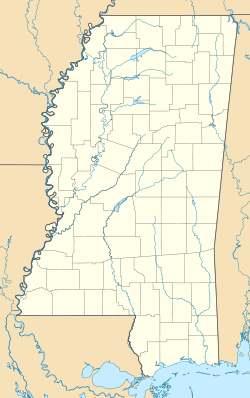 Stairs leading up Ingomar Mound | |
| Location | Ingomar, Mississippi, Union County, Mississippi, |
|---|---|
| Region | Union County, Mississippi |
| Coordinates | 34°23′50.1″N89°02′57.7″W / 34.397250°N 89.049361°W |
| History | |
| Founded | 200 AD |
| Abandoned | 1800 AD |
| Cultures | Woodland period, Mississippian culture |
| Site notes | |
| Architecture | |
| Architectural styles | platform mound |
| Architectural details | Number of monuments:1 |
Ingomar Mound | |
| NRHP reference No. | 78001632 [1] |
| Significant dates | |
| Added to NRHP | June 9, 1978 |
| Designated USMS | September 11, 2002 [2] |
| Responsible body: The Archaeological Conservancy | |
Ingomar Mound is the large central mound and sole remaining feature of a ceremonial center of the late Mississippian Period of cultural development. A total of 13 mounds composing the group have been excavated. Believed to be a temple mound, Ingomar is the only structure of the group not overrun by later agriculture and development, thus generally undisturbed when archeologists began studying the complex of mounds. [3] At least one of the mounds in the group was a flat-topped burial mound. [4] Ingomar is one of the largest such mounds found in the Southeast. [5] Ingomar is important because of its potential for the testing of theories about aboriginal settlement pattern hypotheses, such as the Clay's system environments theory [6] and Steponaitis' spatial efficiency theory [7] [8]

